As an already highly reputed and globally recognised brand, Hitachi Industrial Equipment Systems is specialized in providing advanced industrial electric equipment and systems solutions that are critical to its customers’ operations. We spoke to President Yasuhiro Takeuchi about the company’s key role in supporting global industry thanks to its strength in developing innovative and complex products, as well as the firm’s increasing emphasis on providing services that complement its products, its desire to continue expanding in the North American market, and its ambitious sustainability objectives, including achieving carbon neutrality in all its facilities by 2030.

Over the past decades, Japan has seen the rise of regional manufacturers in China, South Korea, and Taiwan who have managed to replicate its production processes while benefitting from a cheaper labour force and economies of scale. Despite this stiff price competition, many Japanese firms have maintained large global market shares in B2B fields and niche applications, often characterised by high-mix low-volume production. As an integrated manufacturer of industrial equipment, what do you believe are the reasons behind Japan’s success in such fields?
As an island country, Japan has historically been both geographically and economically protected from the outside world. Due to this isolation, the Japanese market was insulated from foreign companies, which allowed Japanese firms to grow exponentially. Today, the domestic market has matured, but various companies have grown big enough to survive even significant market disruptions.
In terms of technology and cost competition, Japan must avoid mass production style manufacturing and focus instead on added-value products. At Hitachi Industrial Equipment Systems, we focus on the development of advanced engineering and value-added products. Our solutions play a critical role in our customers’ businesses. For example, our G series oil-free screw compressors are oil free and equipped with noise control devices. Only a few companies in the world are able to develop such products, and Hitachi is one of them. Our ability to develop such innovative and complex products is the reason why we play a major role in global industry.
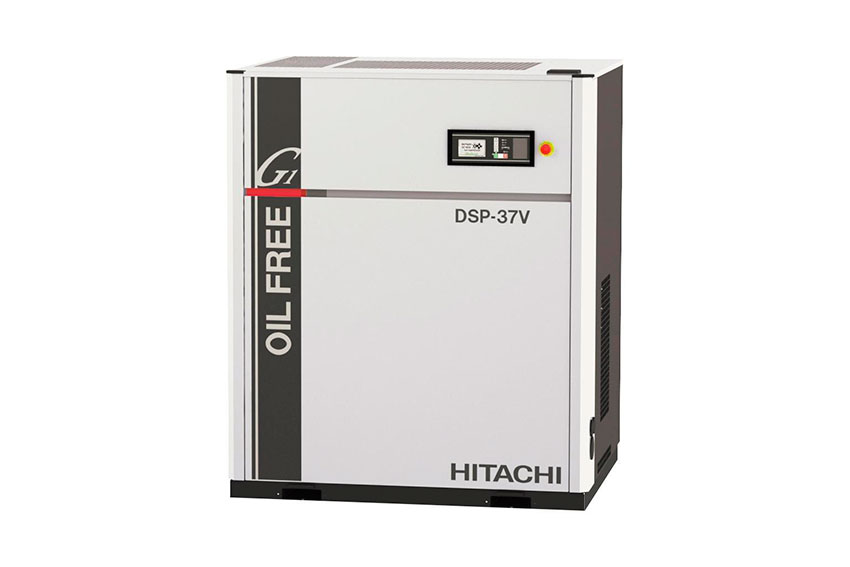
G series oil-free air compressor
While not being the only advanced society with a declining population, Japan is the oldest country in the world, with a third of its population expected to be 65 or older by 2035. This is creating a labour crisis, especially in labour-intensive sectors such as manufacturing, construction, energy, and healthcare. What challenges and opportunities does Japan’s demographic situation present for your company?
We have concerns about the future growth of Japan and in fact, we consider the Japanese market as not growing anymore. On the other hand, 60 % of our current business remains domestic. As such, we are focusing our domestic strategy on creating “returning cycles” where we provide services, rather than just products, to our customers.
To be successful in the long-term, we need to innovate and grow. To achieve this, we have to expand further internationally: our growth must come from outside of Japan. We are currently focusing on North America, where people and firms not only accept new technologies quickly, but are also willing to pay for related services. Among Japanese companies, Hitachi is a frontrunner in the North American market, which gives us a competitive edge.
When you became president, what changes did you implement on account of your international experience?
People who have been in our industry for a long time do not believe that disruptions will happen. They often think that our business environment will remain unchanged because they always talk to the same customers and provide the same product. One of the major reasons I was chosen as president is to challenge that way of thinking. Working in the United States already makes me a minority here in Japan. Whereas diversity is a natural and accepted facet of business in America, it is relatively new to Japan. In the US, many women work in the manufacturing sector, and IT companies are often multicultural. Despite certain pushbacks, I hope to use my experience to make our mindset evolve.
In 2017, Hitachi Industrial Equipment Systems acquired Sullair, a leading manufacturer of air compressors headquartered in the US. This acquisition came at a time when the Trump administration was aiming to “bring manufacturing back to the US”; a policy that is also supported by the current Biden administration. What is your strategy for taking advantage of the US’ manufacturing revitalization?
We are expanding our US sales channels to create a hybrid model that combines direct sales and distributors. In Japan, while we already have a solid distributor network, we tend not to reach our customers directly, as we would like to. By incorporating digital technologies into our business, we can access and provide solutions to our customers more directly and without having to go through channel partners. Of course, covering the entire market requires a lot of manpower, so having distributors and channel partners is greatly beneficial. I think we need to be closer to our customers to better understand what they want from us. To have access to that information, we are buying some of our channel partners.
Our target is also to create synergies with IT enterprises who have strong digital capabilities. Rather than creating digital tools from scratch, we are looking for complementary acquisitions. These are the major criteria for our M&A strategy, and we are actively looking for such partnerships in North America.
How do digital technologies allow you to increase the functionality of your industrial controllers?
Our HX series of Industrial Controllers combines PLC (Programmable Logic Controller) functions with storage capabilities. These devices integrate core control and communications of automated machines and production facilities, allowing for communication, motion and sequence control. IT engineers utilizing our products can program the internal logic within the PLC using various protocol languages. However, simply providing the hardware is not enough to find the solutions our clients require. To add additional value, we offer solutions that combine these controllers with high- precision location information. This technology allows our customers to use our HX Series across various applications. In the field of construction machinery, for example, our Industrial Controllers enable the automated control of different types of construction vehicles.
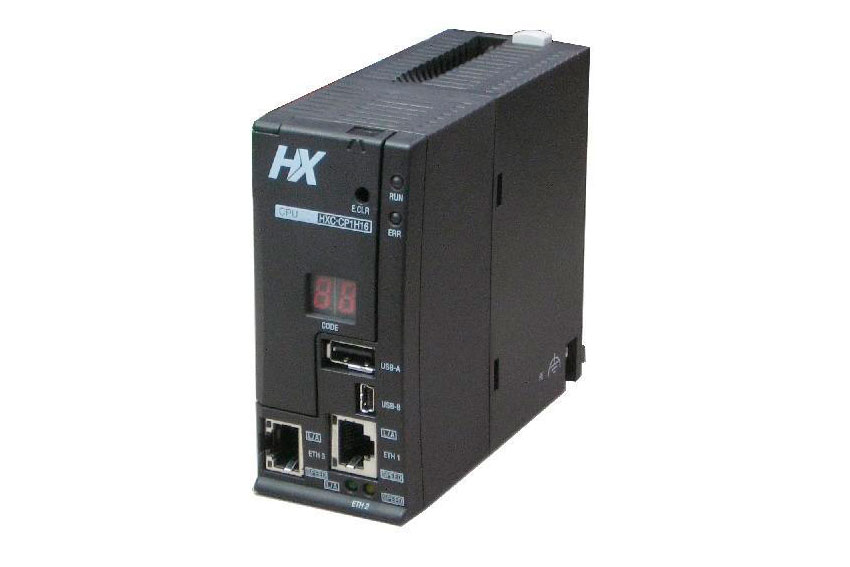
HX Series Industrial Controller
When I was in the US, I was working on the digital side of our business, and I acquired knowledge about digital platforms. In Japan, it is difficult to make people understand that Google and Microsoft have already designed effective digital platforms, tools, and protocols. Creating our own digital tools from scratch would be like competing with these giants, and that is simply impossible. Rather, we must utilize and integrate the tools created by these tech giants into our products and services. The tools they offer have become world standards, so why compete? To some extent, I believe the reluctance to use another company’s solutions is indicative of attitudes in Japan. Large customers, including the government and regional banks, request to work with Hitachi and often ask us to design the entire system from scratch. Everything Hitachi does is made to satisfy our customer’s demands, so customizing these digital technologies has become the norm. Because each client asks us to create customized solutions, we are unable to create a standard or common platform. I believe this is a major reason why Japan is slow to change. Japan is strong at system integration, but weak at standardization.
As digital technologies, especially IoT and Big Data, become commonplace across production facilities and plants, companies are becoming increasingly concerned with security risks, including for communication networks, such as data leaks and cyberattacks. How do you respond to your clients’ security concerns?
Even with the advancement of cloud services and 5G technology, PLC is still needed across factory floors because critical manufacturing applications will always require reliability, efficiency, and no latency. To further secure our clients’ networks, we utilize mobile connectivity instead of Wi-Fi as the latter has more security issues. Furthermore, security is one of Hitachi Group’s biggest strengths, and we utilize our mother company’s competitiveness to our advantage.
In January 2022 you added new models to your CPTrans industrial wireless router line-up to cater to new overseas markets. These routers include the MGW, which has obtained communication approvals from 60 countries, and the GLW which can be safely mounted on moving objects such as construction and agricultural machinery. Could you tell us more about these industrial routers and how you adapt them to international requirements?
CPTrans is an industrial router that connects devices to the carrier communication network and is used for remote monitoring. The router also provides communication between us and the customer. Using national carriers from around the world, such as KDDI in Japan or AT&T in the US, we provide a globally compatible internet network. With this globally compatible network, our clients do not need to stipulate internet contracts in each country of operation. They can just buy our CPTrans and install it at the facility of their choice.
Our goal is to have 150 countries connected to this product. We currently have 60, and we will soon push that number to 80. Countries such as China and India have specialized regulations that protect data coming out of their countries, so we may not be able to integrate them in the same way.
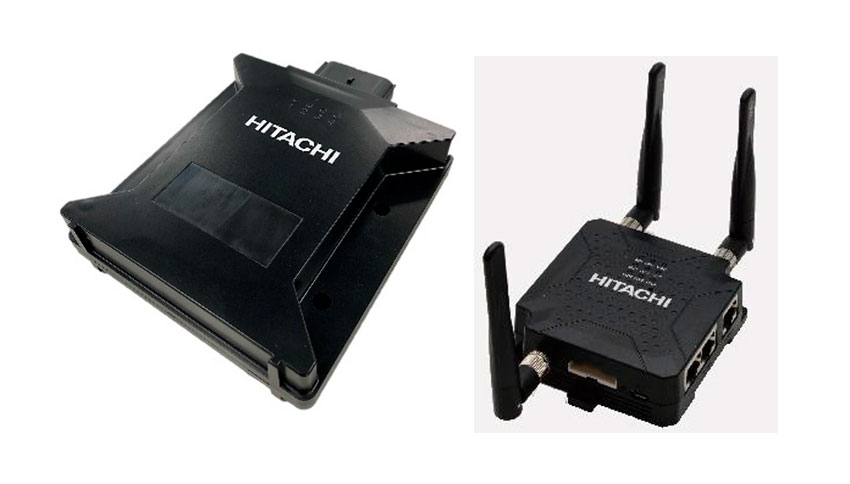
CPTrans industrial wireless router
Hitachi Industrial Equipment Systems offers a diverse set of industrial marking and coding products, including inkjet printers and laser markers. The international market for marking equipment is known for being competitive. How do your products stand out from the competition?
Companies across several industries, be it packaging, food, manufacturing, or retail, need to track and trace their products. To do so, they mark an ID onto each item. At Hitachi Industrial Equipment Systems, we provide continuous Ink Jet Printers and Laser Markers to create track-and-trace solutions for our clients. Our best-selling product represents 50% of the market in Japan. Laser technology is more environmentally friendly, so it is growing in popularity.
For our inkjet printers, the ink does not contain SVHC (Substances of Very High Concern) as specified by REACH regulation in the European Union. Our inkjet products are mainly used for non-straight substrates. Our laser marking products use state of the art technologies and are among the most advanced in the world. With substrates that can vary in thickness, shape, and material, offering different technologies is paramount to expansion in the marking system market.
Our company’s continuous inkjet technology is probably the best in the world. The most important aspect for our clients is that the marking process operates nonstop and with no down time. The challenge with marking technologies is that if there is an error in the marking, the product must be thrown away. Our technology resolves this issue. Furthermore, we have a long history in this sector and our established brand helps us in marketing our products.
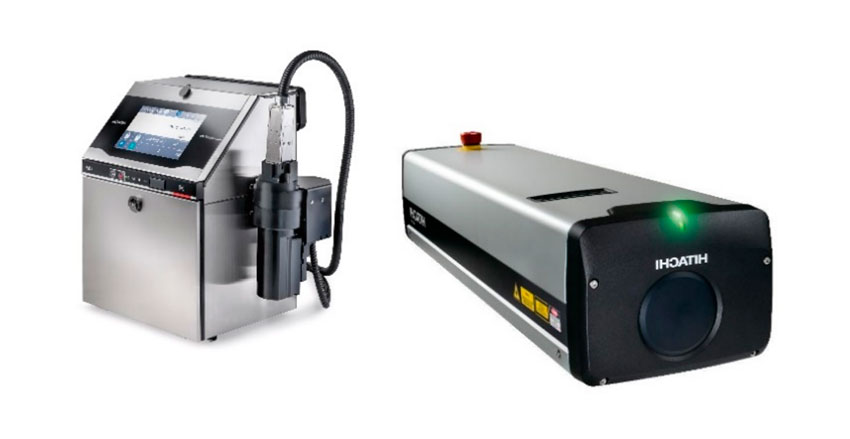
Inkjet printer and laser marker
In 2021, the Suga administration declared that Japan would aim for carbon neutrality by 2050. Following this declaration, large industrial players restated their commitment to sustainable business practices. How is Hitachi Industrial Equipment Systems promoting environmental care and sustainable business practices?
We created a new division in our company, the “sustainable strategy group”, which is responsible for handling diversity and inclusion, environmental strategy, and risk management. The purpose of this division is to make our company more sustainable and one of the key targets is to promote environmentally friendly practices and products. As such, our objective is to make all our facilities carbon neutral by 2030. The Hitachi Group is committed to achieving environmental sustainability.
With regards to production, we aim to reduce our carbon emissions by 50% by 2030. Hitachi also inaugurated its new three-year mid-term plan and within it, Hitachi Industrial Equipment Systems is set to invest only in green and digitally innovative products.
An example of our commitment to developing innovative and green products is our Amorphus Metal Transformer. When transformers are used on electric grids, core loss occurs. Our Amorphus Metal Transformer significantly reduces losses in comparison to traditional devices. I believe this product to be the most efficient transformer in operation. Currently, it is only sold in Japan, but Hitachi Energy predicts that it will soon play a significant role in reducing global energy consumption.
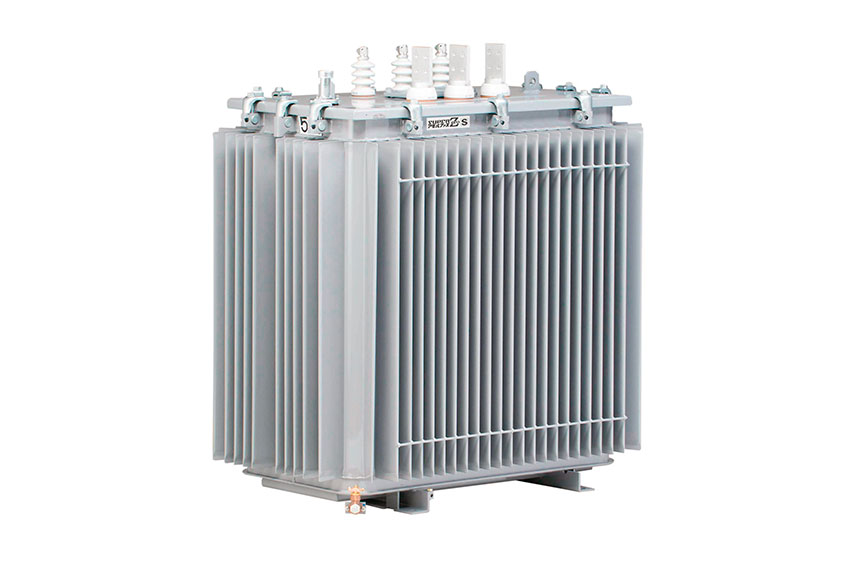
Amorphus distribution transformer
Which countries or regions are you targeting for your growth strategy?
For now, we are focused on developing the North American market. Due to the decoupling between China and the US because of trade frictions, we are consolidating our Chinese assets while enhancing our regional supply chains.
Since most conversations about green technologies begin in Europe, we would also like to expand our presence on there to participate in those conversations and help shape environmental regulations.
How have the recent supply chain disruptions impacted your business?
Currently, China’s “zero COVID-19 policy” represents the number one risk to our supply chain. As COVID-19 cases have spiked, China has closed the Shanghai area, and some of our supplies have been stopped from leaving the country: some of these components are critical to making our final products. Be it in China, Japan, or the US, we need to have resilient supply chains.
Imagine we come back to interview you again on your last day as president, what goals or objectives would you like to have achieved by then?
I do not have a specific goal or objective. However, I want to make sure that Hitachi Industrial Equipment Systems grows and prospers over the next 10 years. I also want our next generation of employees and executives to enjoy and feel proud of working at our company. These are the goals of my presidency.
0 COMMENTS